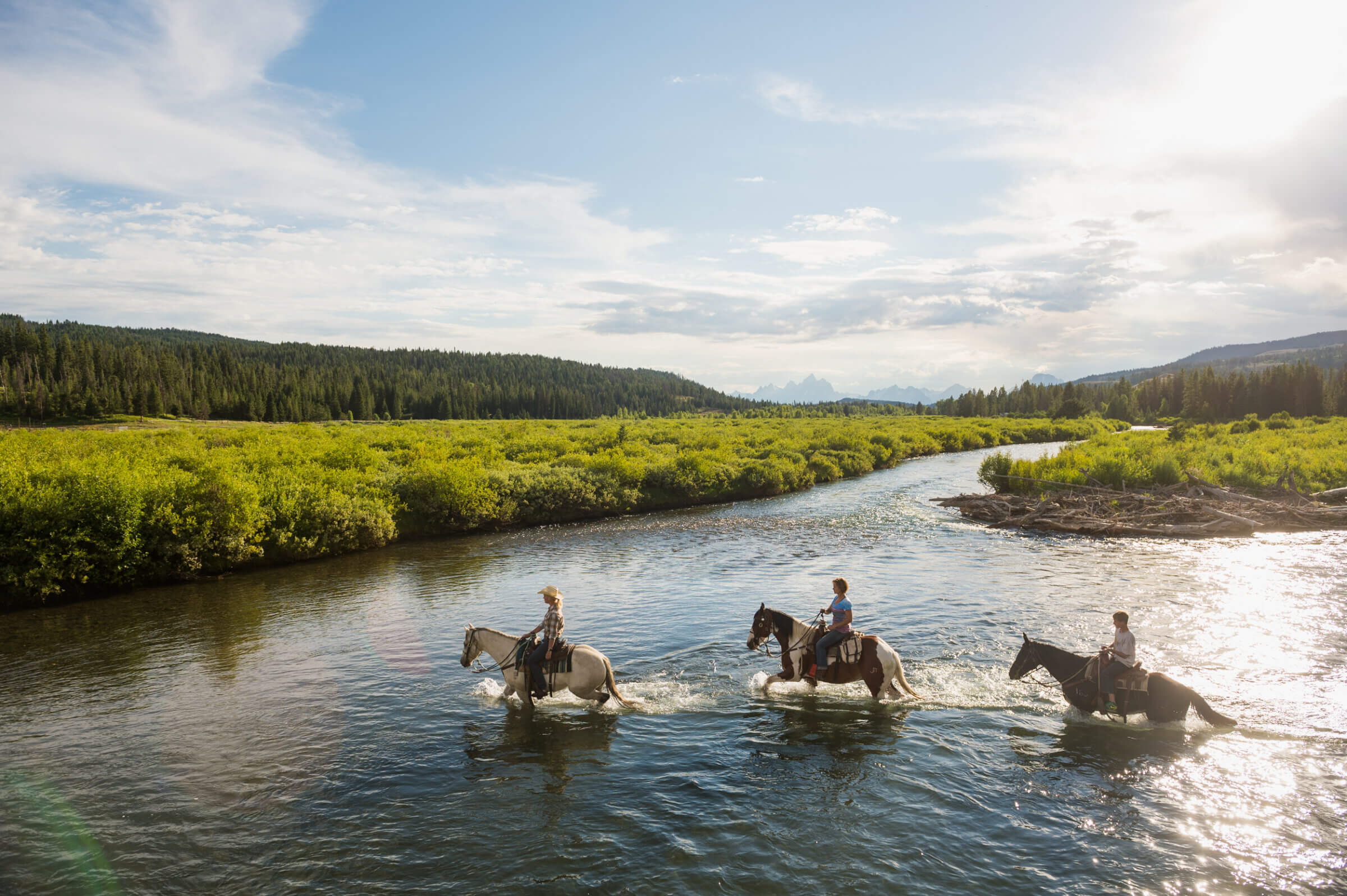Snowmobiling
High-horsepower sledding.
In Jackson Hole, there’s snowmobiling for beginner and experienced riders.
Jackson Hole is a snowmobiler’s paradise, whether you’re looking for technical terrain, miles of mellow trails, or want to do some wildlife watching or sightseeing. No experience is required to try snowmobiling in Jackson Hole since there are great options to go with a guide or on a tour.
Nearly 600 miles of snowmobile trails fan out from the 9,659-foot summit of Togwotee Pass, allowing snowmobilers to explore an area bigger than the state of Rhode Island. Here, expert and avalanche-aware snowmobilers with a partner, a plan, and the necessary gear can leave the trails to ride in the backcountry. And Togwotee, straddling the Continental Divide, is just one area in and around Jackson Hole for snowmobiling.
Granite Hot Springs is a popular beginner’s snowmobile experience that allows you to explore the wilderness on a groomed doubletrack and dip your toes into a historic hot spring. And, of course, there are guided snowmobile trips into Yellowstone in its winter quiet.
Local Tips
- The snowmobiling culture in Jackson Hole is to be back at the trailhead with a safety margin of at least 1 to 2 hours well before dark. Nighttime temperatures are regularly below zero. You do not want to get benighted.
- “Jackson Hole is unique as a snowmobiling location because backcountry skiers are sometimes in the same terrain that snowmobilers are,” says Ryan Mertaugh, a member of Teton County Search and Rescue and a former snowmobile guide for a decade. “If there is a group of skiers in an area, it’s courtesy to give them appropriate space and don’t snowmobile through their group. And I would expect the same from skiers. We have a big, big playground here; there’s space for everyone.”
- There are three different snowpacks within an hour of Jackson Hole: the Tetons, the Snake and Wyoming Ranges, and Togwotee Pass. Each has different avalanche conditions—check the Bridger-Teton Avalanche Center for avalanche reports before deciding which terrain to ride in, be prepared with the proper avalanche equipment and know how to use it, and tell someone where you’re going and when you expect to return.
Live by the Wild Rules
Questions about Snowmobiling in Jackson Hole
From groomed doubletrack to backcountry adventures.
Edit FiltersAdventure starts here.
Keep Exploring